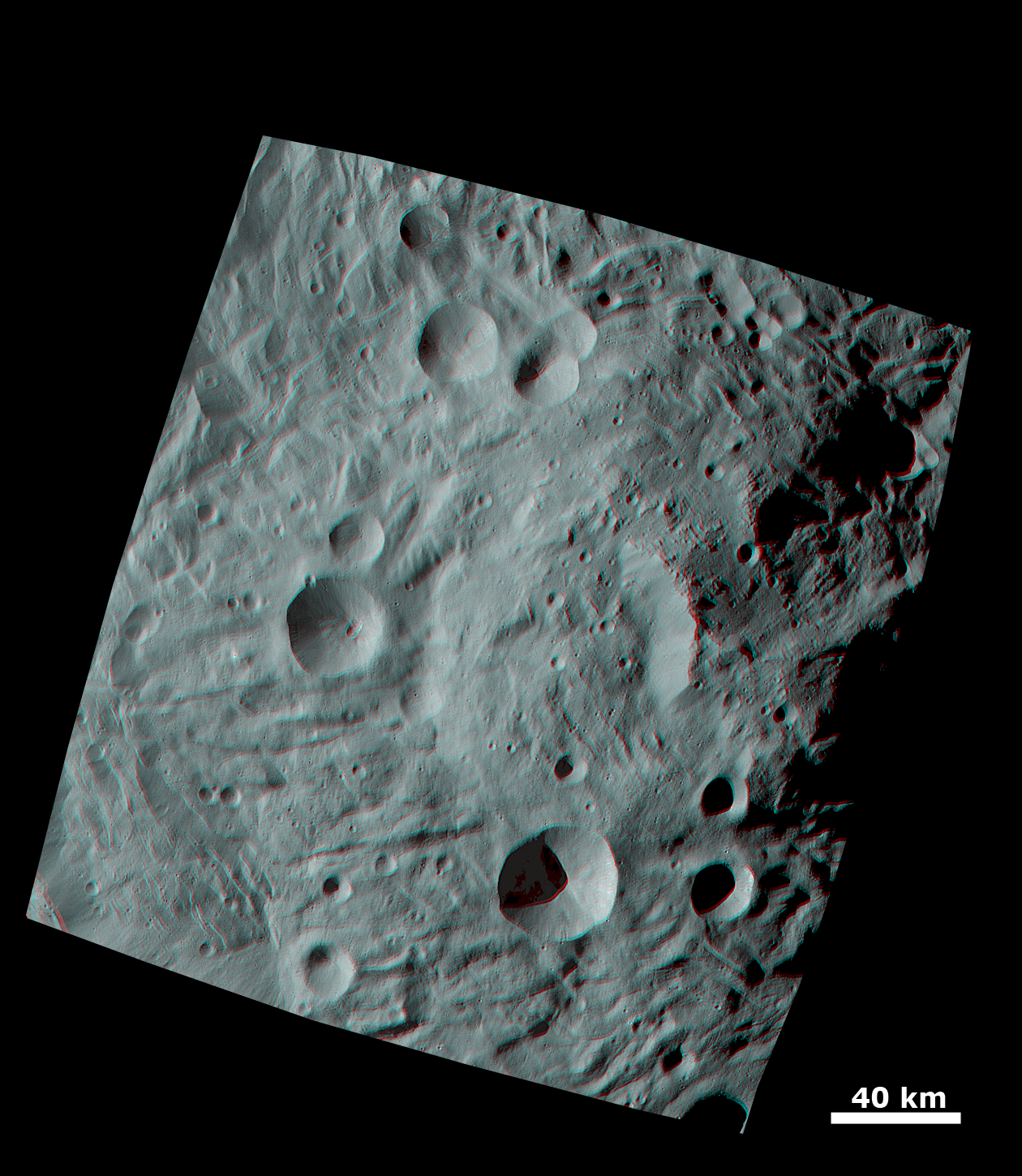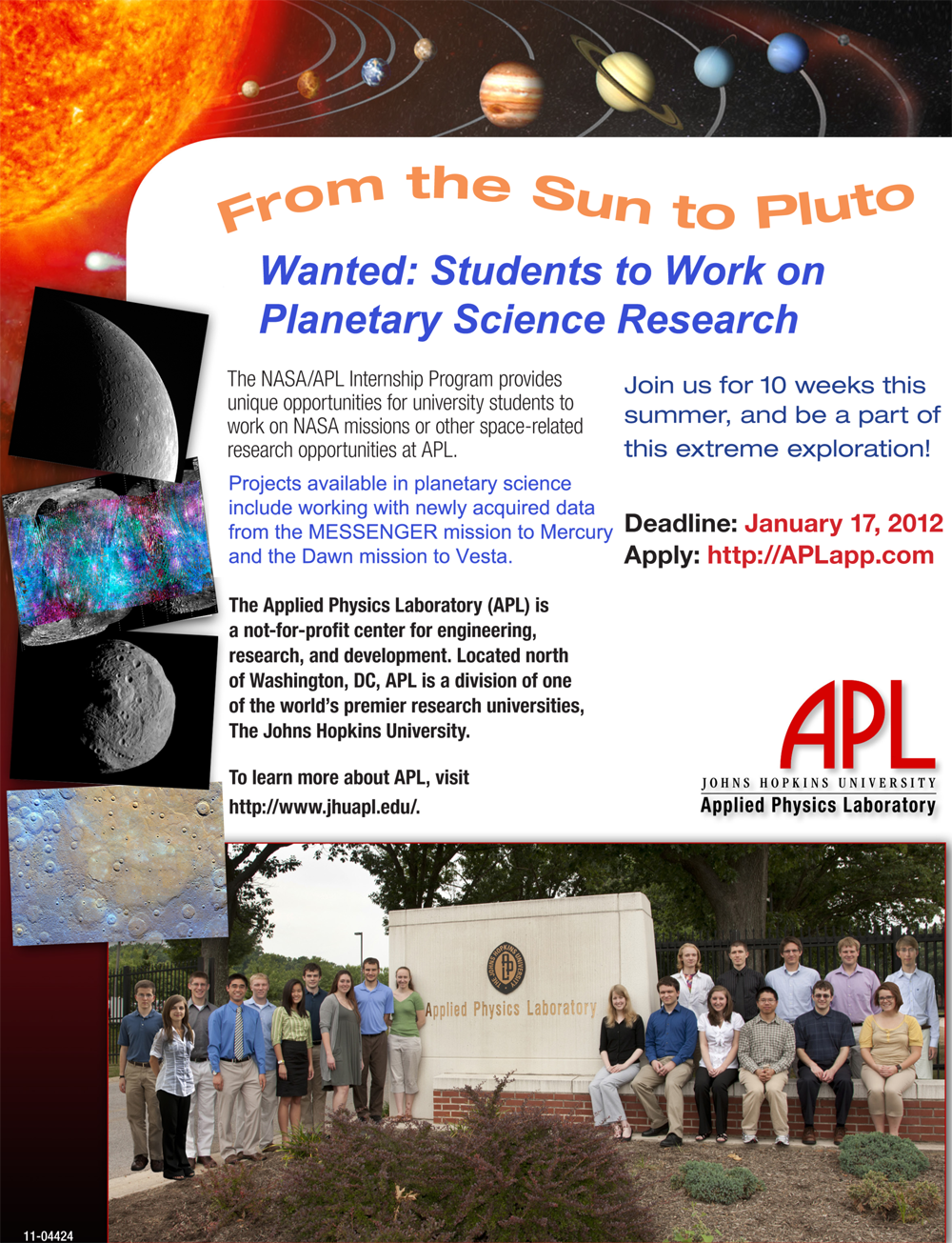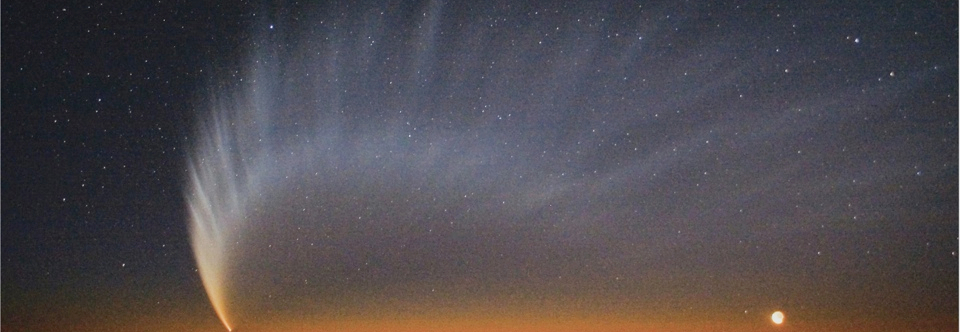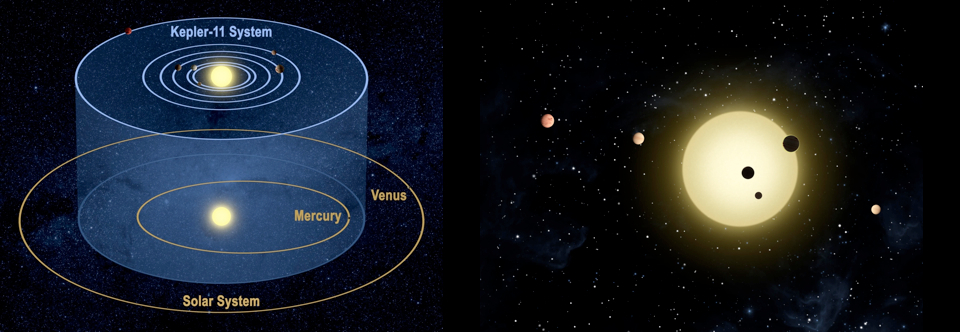The Asteroids, Comets, Meteors (ACM) meeting is the premier international gathering of scientists who study small bodies. The ACM series began in 1983 in Uppsala, Sweden, as a means of bringing together different groups within the asteroid, comet, and meteor communities who do not often have the opportunity to interact. From this first ACM meeting, a regular conference began. The conference now takes place every three years*, and it is the pre-eminent meeting for small-bodies research, with attendance usually in excess of 400. The 2012 ACM meeting will be the 11th in the series and will be the first time in Asian Region. Asteroids, Comets, Meteors (ACM) 2012 will be held 16 – 20 May, 2012, in Niigata, Japan, at TOKI Messe (Niigata Convention Center). The meeting will start on Wednesday (16th) and end on Sunday (20th). For more information, visit: http://chiron.mtk.nao.ac.jp/ACM2012/
Planetary Meetings and Conferences Calendar 2012
The Lunar & Planetary Institute has posted the 2012 calendar of meetings, conferences, workshops and seminars of interest to the planetary science community. It can be found here: http://www.lpi.usra.edu/meetings/
NASA/APL Internship Program
Rheasilvia basin generated from Dawn topographic data.
By Jennifer Scully

The above image was generated from Dawn topographic data and is a tilted view of Vesta’s Rheasilvia impact basin, which is a ~500km depression that dominates the topography of Vesta’s southern hemisphere.
The Dawn spacecraft arrived at the asteroid Vesta on 16th July 2011, with the aim to understand the evolution of Vesta. Since then it has been acquiring data with its three different instruments: the Framing Camera (FC), the Visible and Infrared Spectrometer (VIR) and the Gamma Ray and Neutron Detector (GRaND).
Even before Dawn reached Vesta the Rheasilvia basin was visible in Hubble images of the asteroid (for more information see Thomas, P.C. et al. 1997. Science, 277, 1492-1495). The Rheasilvia basin contains a large central complex, which is visible as the roughly circular mound offset from the center in the anaglyph image below. To create this anaglyph, two differently colored images were superimposed with an offset to create depth. When viewed through red-blue glasses it shows a 3D view of Vesta’s surface.

The Rheasilvia central complex is approximately 200km in diameter and has approximately 20km of relief from its base, which makes it about 2.5 taller than Mt. Everest! The topographic differences in the Rheasilvia basin are clear in the cross section in the figure below, which shows the central complex in the foreground and the rim in the background. Also evident is that the rim of the Rheasilvia basin is very pronounced in places. A part of the rim forms a steep cliff, called a scarp, visible in the right side of the figure. There is also a large scarp on the central complex and surrounding the central complex is the hummocky (i.e. wavy/undulating) texture of the Rheasilvia basin. Possible formation mechanisms for this hummocky texture are currently under investigation.

The Rheasilvia basin, and the impact that formed it, is possibly the source of the Vestoid meteorites. The Vestoids are a suit of meteorites believed to come from Vesta because their reflectance spectra match the average reflectance spectrum of Vesta (for more information see McSween, H.Y. et al. 2010. Space Science Reviews, 163, 141-174). For this reason the Dawn mission is unusual because samples of the asteroid were already on Earth before the Dawn spacecraft, or any spacecraft, reached and orbited Vesta. These meteorite samples, combined with the remotely sensed data from Dawn, will help to develop a picture of the origin and evolution of Vesta. It is thought that Vesta formed within the first few million years of the solar system and, unlike the Earth, Vesta has not been subsequently modified by geological and atmospheric processes. Thus, developing a picture of the origin and evolution of Vesta provides a window into the development of the early solar system.
When Dawn leaves Vesta in late 2012 it will travel to the asteroid Ceres. Ceres is the largest asteroid in the asteroid belt and, unlike Vesta, likely contains water ice. Consequently, Vesta and Ceres, which are the most massive asteroids in the solar system, provide insights into the evolution of both the rocky bodies and the icier bodies of the solar system. For more information about the Dawn mission see the paper “The Dawn Mission to Vesta and Ceres” available at http://www.springerlink.com/content/f46t37l0617571j6/. For more images from the Dawn mission see the Dawn Image of the Day website at http://dawn.jpl.nasa.gov/multimedia/imageoftheday.
The Dawn mission to Vesta and Ceres is managed by NASA’s Jet Propulsion Laboratory, a division of the California Institute of Technology in Pasadena, for NASA’s Science Mission Directorate, Washington D.C. UCLA is responsible for overall Dawn mission science. The Dawn framing cameras have been developed and built under the leadership of the Max Planck Institute for Solar System Research, Katlenburg-Lindau, Germany, with significant contributions by DLR German Aerospace Center, Institute of Planetary Research, Berlin, and in coordination with the Institute of Computer and Communication Network Engineering, Braunschweig. The Framing Camera project is funded by the Max Planck Society, DLR, and NASA/JPL.
Comet C/2006 P1 McNaught showing dust fragmentation in the tail
Artist’s view of Kepler 11, a planetary system with 6 confirmed exoplanets.
Cassini Chronicles Life of Saturn’s Giant Storm
New images and animated movies from NASA’s Cassini spacecraft chronicle the birth and evolution of the colossal storm that ravaged the northern face of Saturn for nearly a year.
These new full-color mosaics and animations show the storm from its emergence as a tiny spot in a single image almost one year ago, on Dec. 5, 2010, through its subsequent growth into a storm so large it completely encircled the planet by late January 2011.
The monster tempest, which extended north-south approximately 9,000 miles (15,000 kilometers), is the largest seen on Saturn in the past two decades and is the largest by far ever observed on the planet from an interplanetary spacecraft. On the same day that Cassini’s high-resolution cameras captured the first images of the storm, Cassini’s radio and plasma wave instrument detected the storm’s electrical activity, revealing it to be a convective thunderstorm. The storm’s active convecting phase ended in late June, but the turbulent clouds it created linger in the atmosphere today.
The storm’s 200-day active period also makes it the longest-lasting planet-encircling storm ever seen on Saturn. The previous record holder was an outburst sighted in 1903, which lingered for 150 days. The large disturbance imaged 21 years ago by NASA’s Hubble Space Telescope and comparable in size to the current storm lasted for only 55 days.
Lunar Intern Program
The Lunar and Planetary Institute (LPI) is hosting a special summer intern program to evaluate possible landing sites for robotic and human exploration missions. The LPI invites applications from graduate students in geology, planetary science, and related programs. The program is also open to undergraduate students in geology, astronomy, chemistry, and physics with at least 50 semester hours of credit so that they, too, can participate in lunar exploration activities. Continue reading “Lunar Intern Program”
Exploring Your Universe!
Exploring Your Universe (EYU) is a FREE public outreach event held on the UCLA campus every year in the Fall that showcases science from departments across UCLA through hundreds of fun, hands-on activities, demonstrations and experiments for all ages. With wide involvement from students, staff and faculty, EYU has quickly become the main science outreach event at the university. In addition to hands-on demonstrations and experiments, there is a lecture series, a planetarium show, a physics show, and access to rare fossils and UCLA’s world-class meteorite collection – this event truly has something fun for everyone! In 2013, more than 4500 participants flocked to UCLA’s campus to join the all-day science exhibition – come participate at this year’s event in November! For more information regarding this year’s event, scroll down.
The 2014 Exploring Your Universe outreach event will be held on November 16, 2014 on UCLA’s campus.
We recommend visitors arrive early and plan to stay for the duration of the event, as there is plenty to see. We will be giving away 500 free swag bags at the beginning of the event!
Weather permitting, the event will include nighttime activities such as telescope observing in the evening after the rest of the exhibits close. For more detailed information, visit our main EYU page: http://planets.ucla.edu/outreach/exploring-your-universe/




